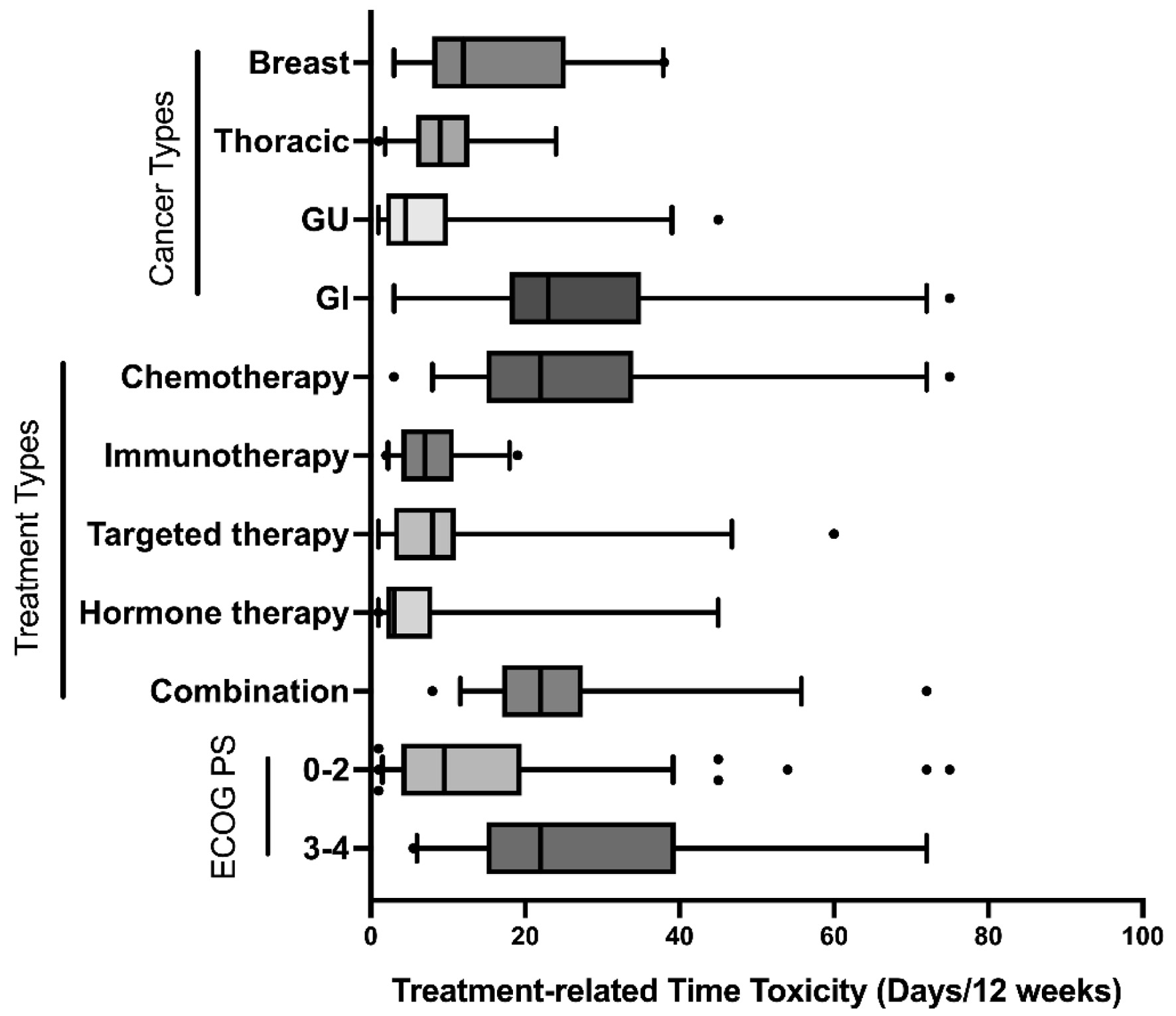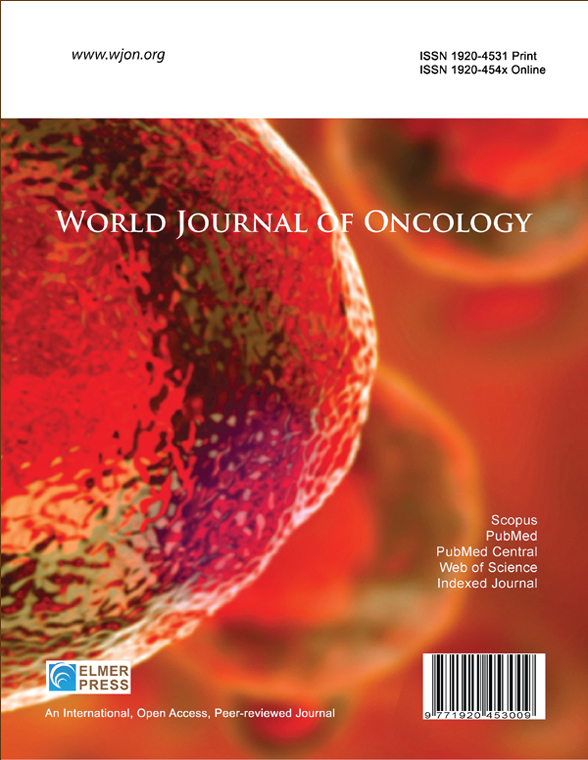Measuring the Unseen Burden: Immunotherapy and Targeted Therapy Reduce Treatment-Related Time Toxicity in Incurable Malignancies
DOI:
https://doi.org/10.14740/wjon2637Keywords:
Time toxicity, Incurable cancer, Healthcare utilization, Immunotherapy, Targeted therapyAbstract
Background: Treatment-related time toxicity (TrTT) poses a cumulative burden on quality of life. We aimed to analyze and quantify the impact of the TrTT on patients with incurable malignancies in our ambulatory oncology clinic.
Methods: We performed a retrospective observational analysis of the TrTT for individuals with incurable solid cancers at a regional safety-net oncology office that focuses on underserved communities. Time toxicity is calculated as the number of days a patient spent with any healthcare-related encounters during the initial 12-week period of the most recent line of therapy from our medical record system.
Results: Among the 150 patients included, the median TrTT was 13 days/12 weeks (interquartile range (IQR) 7 - 23). Fourteen percent of them experienced severe TrTT (> 1/3 of the time spent seeking treatment). We identified multiple risk factors for higher TrTT, including poor performance status, the need for cytotoxic chemotherapy, and gastrointestinal malignancies. Immunotherapy, targeted therapy, and hormone therapy were associated with significantly lower TrTT when compared with cytotoxic chemotherapy.
Conclusions: Disproportionally high time toxicity was seen in patients with frailty, had gastrointestinal malignancies, and were receiving cytotoxic chemotherapy. Our findings underscore the importance of including time-based metrics in shared decision-making in the palliative treatment setting.

Published
Issue
Section
License
Copyright (c) 2025 The authors

This work is licensed under a Creative Commons Attribution-NonCommercial 4.0 International License.









